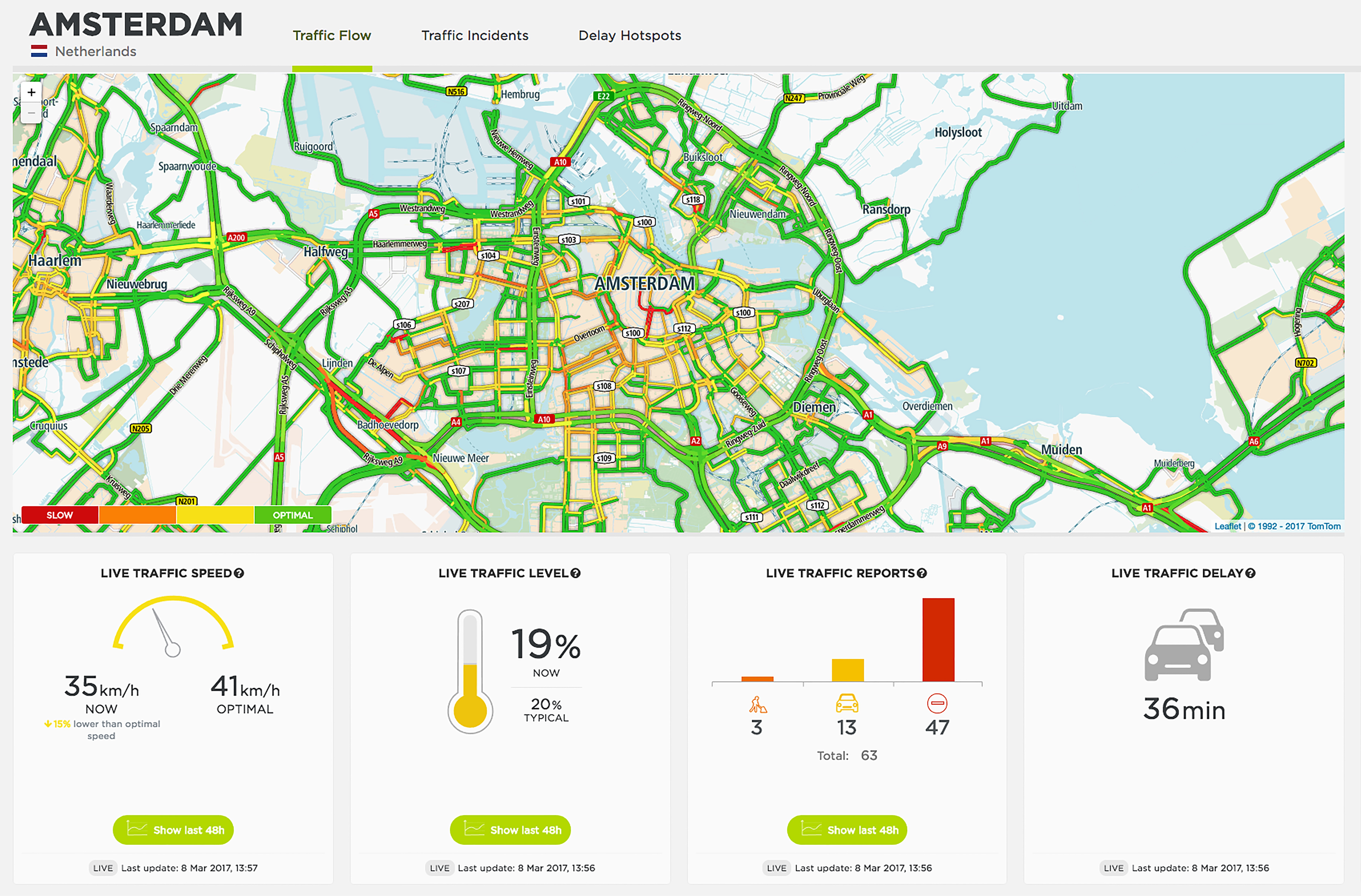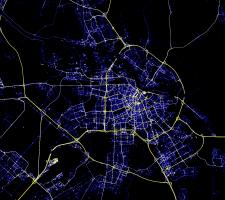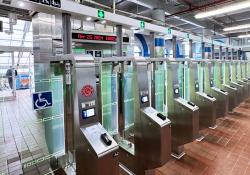
As connected vehicles are progressively rolled out there will come a point at which traffic managers and traffic management centres (TMCs) will have to gear up to cope with a rapidly-evolving road scenario.
The TM 2.0 Platform (see box) is promoting a concept of new-generation traffic management (which carries the same TM 2.0 title) and is studying how future TMCs will monitor and regulate the flow of a mixture of connected, manually-driven and automated vehicles. Under the TM 2.0 concept, the aim is to directly inform drivers (and cars) of the TMC-preferred route. Benefits for city administrators and traffic managers will include the reduction of traffic congestion and unnecessary emissions, while drivers will experience more relaxed driving conditions as they avoid that congestion, together with the improved road safety that accompanies smoother traffic flow.
As Dr Johanna Tzanidaki, director of public affairs at TomTom notes, TM 2.0 is not a project in the normal sense of the word (as it does not have a finite end) but a discussion forum.
“It’s the working together of a group that wants to advance traffic management and make it more informed, coherent and consistent,” she says. “It brings together like-minded ITS stakeholders from all over Europe – including research organisations, city authorities such as Strasbourg and
The group has spent almost three years discussing basic concepts such as business methods and data exchange in small task forces of three or four people. Task forces covering more technical matters, such as how current traffic management practices will be affected by the gradual appearance of automated vehicles, are expected to report around the middle of this year. Creating a stronger degree of information-sharing on traffic conditions would result in drivers being better informed about the route they are using and TMCs being better able to reroute them when a problem arises.
The TM 2.0 concept is a closed information loop based on interactive traffic management in which data would flow from TMCs and roadside service providers to mobility and navigation service providers and back.
“There are many public authorities and city administrations that are very willing to go for this concept,” says Tzanidaki. “Others don’t see the value – they feel threatened that the private sector is going to hijack their authority in taking decisions in traffic management.
“I always say ‘Nobody is threatening you’. We say that we [TomTom] don’t want to DO traffic management, we just want to create a partnership and help you do it.” This, she admits, will require bridging the gap with public sector bodies which consider that they look after the safety aspect of traffic management and assume the private sector is only seeking profits from the provision of services.
“We’re also talking about how to make sure TMCs and road operators cooperate with each other so you don’t have gaps in information when drivers leave one region for another. Cities and regions don’t always cooperate. The TM 2.0 Platform is discussing how best to solve that.
She hopes to be able to give some details at the ITS European Congress in Strasbourg in June.
TM 2.0 will be less about introducing revolutionary new technologies and more about creating ways of using existing ones in new ways. “What we’re trying to create is new interfaces and more enhanced use of data.”
This would involve using an in-car screen that would show drivers both a preferred route suggested by the TMC, and also simultaneously show the fastest route. “Or, [we can say] ‘Be aware that there’s a football match there, do you still want to go through that traffic?’ Or, ‘This route is more environmentally friendly: do you want to use that, or the fastest route?’”
Increasing the depth of connections between TMCs and individual vehicles raises privacy concerns for some people. As is now common, the use of anonymised signals passing from a vehicle to the TMC will ensure that privacy is maintained: “We wouldn’t have data that tracks anyone back to an individual driver or vehicle.”
That reassurance over privacy is taken up by Dr Ulrich Fastenrath, who represents vehicle manufacturer BMW within the TM 2.0 Platform.
Beyond stressing BMW complies with privacy regulations he highlights that: “There will be no direct exchange [of information between a vehicle and the TMC]. The BMW backend is always in between, as the vehicle interfaces are proprietary.”
Technologically, “For BMW, the main challenge is to balance the individual [driver’s] preferences and intentions with goals and strategies of traffic managers to create benefits not only on average but for each individual customer.
Fastenrath echoes Tzanidaki’s comment that TM 2.0 is not about introducing new technologies, but about improving mobility by using existing technology in new ways.
That will include constant communication between individual vehicles and TMCs: “Information about traffic management strategies, measures taken by traffic managers and their goals needs to be made available consistently and in real time by the TMCs.”
Development and installation of aspects of TM 2.0 will take place through cooperative projects. “As of today, BMW is a partner in a couple of project proposals but none of these projects have been approved yet,” says Fastenrath.
It seems TMCs could be on the verge of another leap in data availability and additional ways to influence traffic routing.
Aims of TM 2.0
The TM 2.0 Ertico Platform originated in 2011 from TomTom and Swarco-Mizar and was formally established in June 2014 during the ITS Europe Congress in Helsinki. It now brings together more than 34 members from all ITS sectors focusing on new solutions for advanced active traffic management.
It aims to agree common interfaces, principles and business models that can facilitate the two-way exchange of data and information between vehicles and the traffic management control centres, improving traffic management and mobility services as well as avoiding conflicting information on the road and in the vehicles.
A series of small task forces has been established looking at specific aspects of TM 2.0, such as the exchange of traffic management plans, the role of automation and contractual agreements.
Cloud cover
A variant of TM 2.0 is being formulated in the Belgian city of Ghent. According to Pieter Morlion, project manager at the city’s traffic control centre, TMCs are not adapting sufficiently quickly to disruptive trends within the transport and mobility sector. “This leads to a digital divide which can result in governments and communities losing control over traffic on their territories.” He proposes organising traffic management as a cloud-based service, enabling TMCs to partner with the disruptive services and solutions.
Traffic control centres have remained essentially the same for years, he argues, with people sitting watching multiple screens. Even new TMCs follow this pattern. The hardware installed is expensive and it cannot cover every stretch of roadway. And, when trying to intervene to solve a problem, the options open to TMC staff are limited: getting the police involved; putting messages on VMS systems; or trying to contact drivers through the radio or social media.
Rather, suggests Morlion, TMCs should gather all available information on the status of all transport modes and share it as widely as possible, allowing travellers to choose their mode of transport, route and time of departure.
He argues that services such as Google Maps, Uber and TomTom provide a better service than traditional government-run TMCs, giving a personalised service to road users and allowing them to provide feedback. That results in a better standard of information than is achievable through TMCs’ camera systems.
The solution? “Instead of each city constructing its own control room, build a cloud-based traffic management centre. Any city…can subscribe by paying a monthly fee. Without any big prior investments. Immediately enjoying all the traffic management functionality. Everything would be automated and centralised.”
This central platform could take over the job of taking decisions or warning an operator when an incident occurs. It could send out tweets, send notifications to navigation systems, notify in-car applications, put text on digital message signs and change traffic light signal plans if needed.












